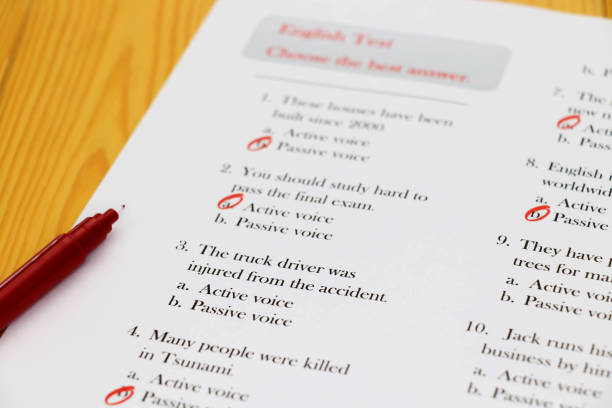
Academic writing requires precision, clarity, and formality, making the choice between active and passive voice an essential consideration. Both have their place, but understanding when and how to use them can enhance the quality of your writing.
What is Active Voice?
In active voice, the subject of the sentence performs the action. This construction is direct and clear, making it easier for readers to understand who is doing what.
Examples:
- Active: The researcher conducted the experiment.
- Active: The author analyzed the data.

What is Passive Voice?
In passive voice, the subject of the sentence is acted upon. The focus shifts from who is performing the action to the action itself or the object of the action.
Examples:
- Passive: The experiment was conducted by the researcher.
- Passive: The data were analyzed by the author.
Comparing Active and Passive Voice
Active Voice
- Clarity: Active sentences are often clearer because they follow the straightforward subject-verb-object structure.
- Engagement: Active voice tends to be more engaging and dynamic, making the text more lively.
- Conciseness: Active constructions are typically more concise, avoiding unnecessary words.
Passive Voice
- Emphasis: Passive voice can emphasize the action or the object of the action rather than the subject..
- Objectivity: Passive voice can convey a sense of objectivity and formality, which is sometimes desirable in academic writing.
- Anonymity: It is useful when the actor is unknown, unimportant, or implied.

When to Use Active Voice
1. Clarity and Directness
When clarity and directness are essential, such as in the introduction, methodology, and conclusion sections of a paper, active voice is preferred. It clearly identifies the doer of the action, making the writing more straightforward.
Example: "We hypothesized that increased sunlight exposure would improve mood."
2. Emphasis on the Subject
When the focus is on the researcher or the author, active voice is more appropriate.
Example: "Dr. Smith discovered a new compound."
3. Reader Engagement
Active voice helps keep readers engaged, particularly in longer texts where maintaining interest is crucial.
Example: "The results support our initial theory."
When to Use Passive Voice
1. Emphasis on the Action or Result
Use passive voice when the action or result is more important than who performed it.
Example: "A significant increase in temperature was observed."
2. Formality and Objectivity
Passive voice often conveys a more formal tone and can create a sense of objectivity, which is useful in scientific and technical writing.
Example: "The solution was mixed until it reached a uniform consistency."
3. When the Actor is Unknown or Irrelevant
In cases where the actor is unknown or not central to the discussion, passive voice is appropriate.
Example: "The ancient manuscript was found in a cave."
4. Consistency in Focus
When maintaining a consistent focus on the action or the object throughout a paragraph or section, passive voice can be useful.
Example: "The samples were collected, and then the data were analyzed."
Seeking Professional Editorial Support
Mastering the use of active and passive voice in academic writing can be challenging, even for seasoned writers. If you find yourself struggling with these concepts, seeking professional editorial support can make a significant difference in the quality of your work. At eContent Pro, we offer high-quality English language copy editing services designed to help you perfect your academic writing.

Why Choose eContent Pro?
1. Expert Editors
Our team of expert editors is well-versed in the nuances of academic writing, including the appropriate use of active and passive voice. They will ensure your writing is clear, concise, and engaging, while maintaining the required level of formality and objectivity.
2. Fast Turnaround
We understand that deadlines are critical in academic work. eContent Pro offers the fastest turnaround times, with services completed in 1 to 2 business days. In some cases, we even provide same-day editing at no extra cost, ensuring you never miss a deadline.
3. High-Quality Service
Our commitment to quality ensures that every document we edit is polished to perfection. We pay attention to detail, correcting grammatical errors, improving sentence structure, and enhancing overall readability.
4. Stress-Free Experience
With eContent Pro, you can focus on your research and writing, leaving the editing to us. Our professional support alleviates the stress of ensuring your document meets the highest standards of academic writing.
Get Started With eContent Pro Today
Getting started with eContent Pro is simple. Visit our website, choose the right editorial package for you, upload your document, and let our skilled editors handle the rest. Whether you need a quick review or a thorough edit, we are here to help you succeed.
By seeking professional editorial support from eContent Pro, you can ensure your academic writing is clear, precise, and of the highest quality. Don't let the complexities of active and passive voice hold you back – reach out to us today and take your writing to the next level.

About eContent Pro
Based in Hershey, Pennsylvania, USA, eContent Pro offers high-quality end-to-end editorial and publishing services, ensuring seamless workflows through the eContent Pro Business Enterprise Management System (BEMS), fast turnaround times, competitive pricing, and exceptional customer service. Since 1994, we have supported commercial publishers, university/library presses, organizations, and societies by streamlining their publishing workflow with innovative publishing solutions.

